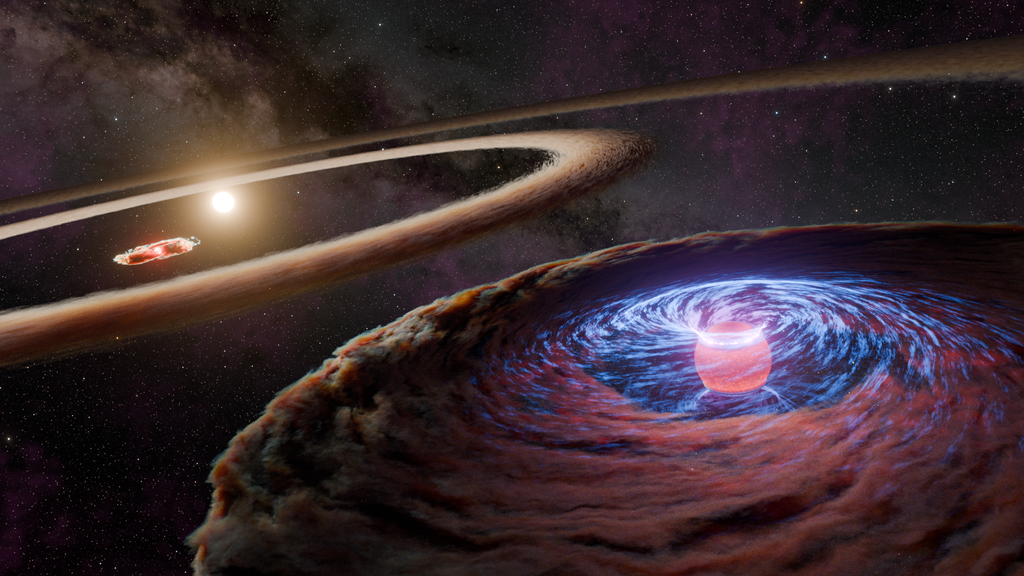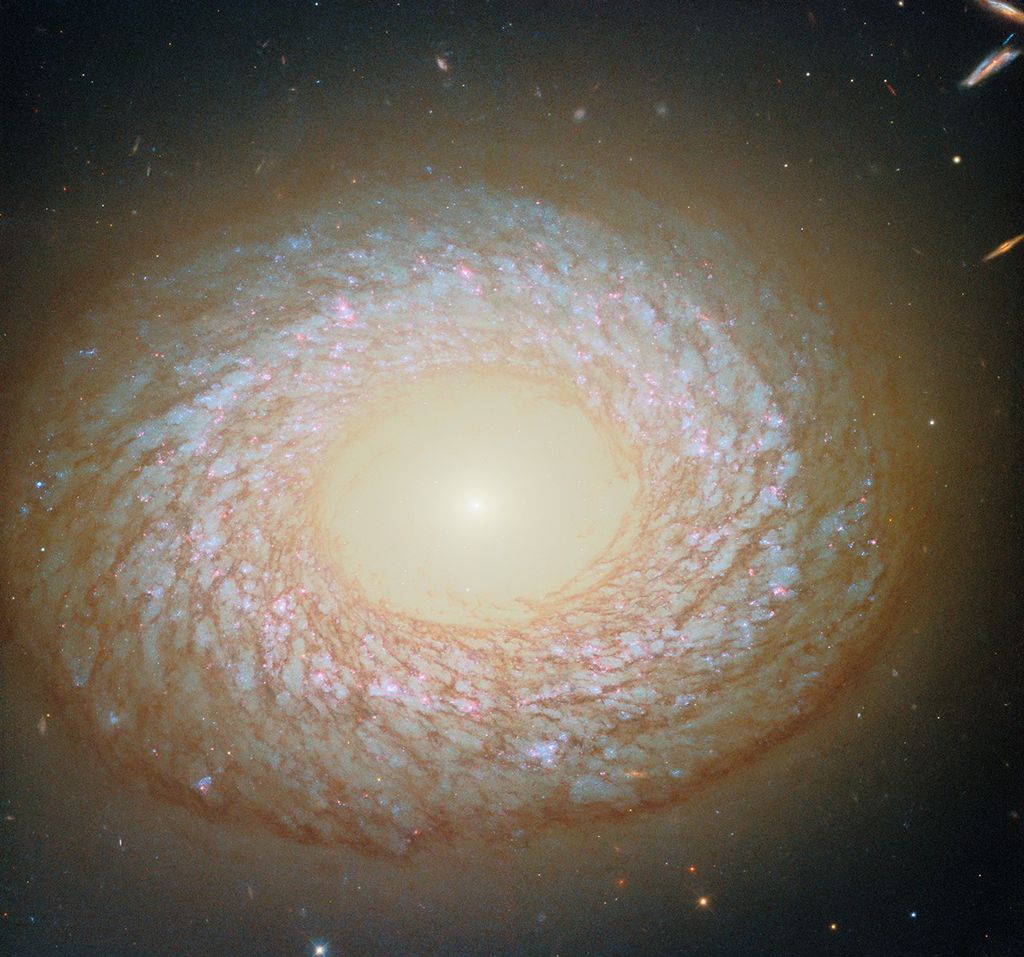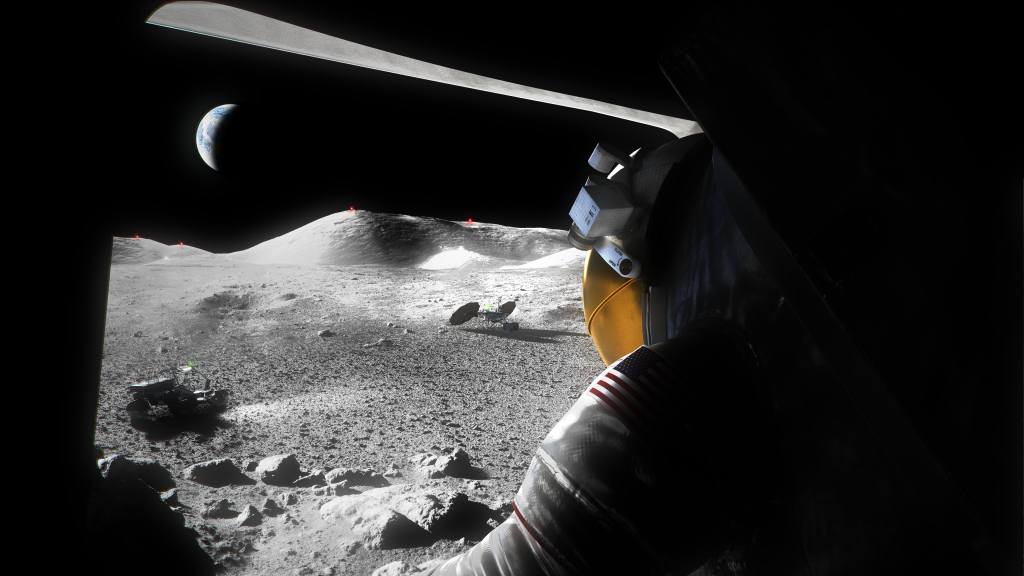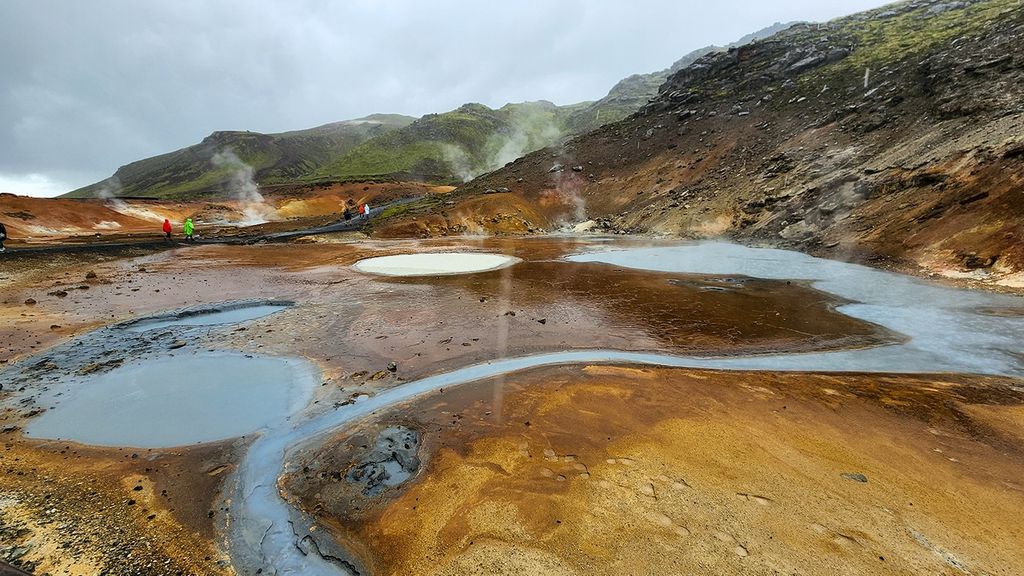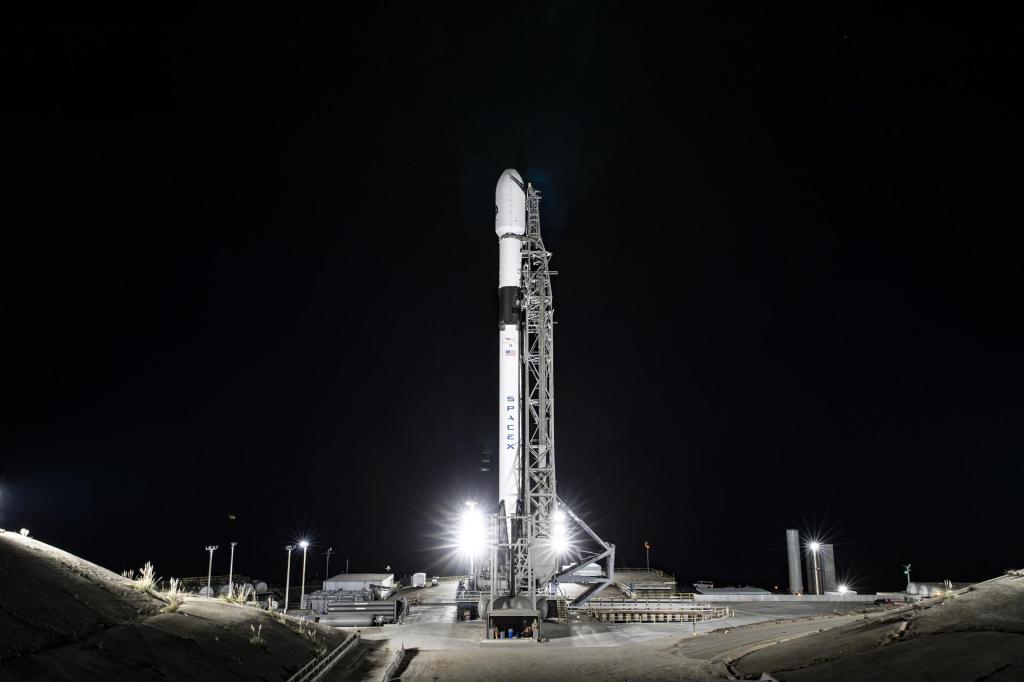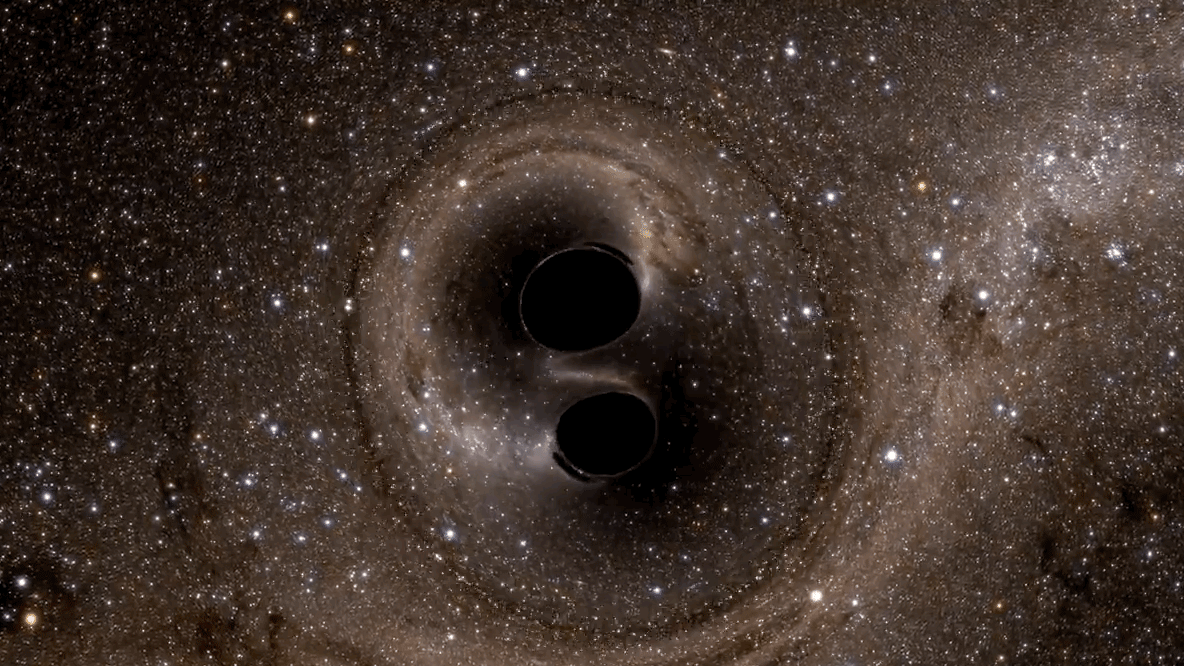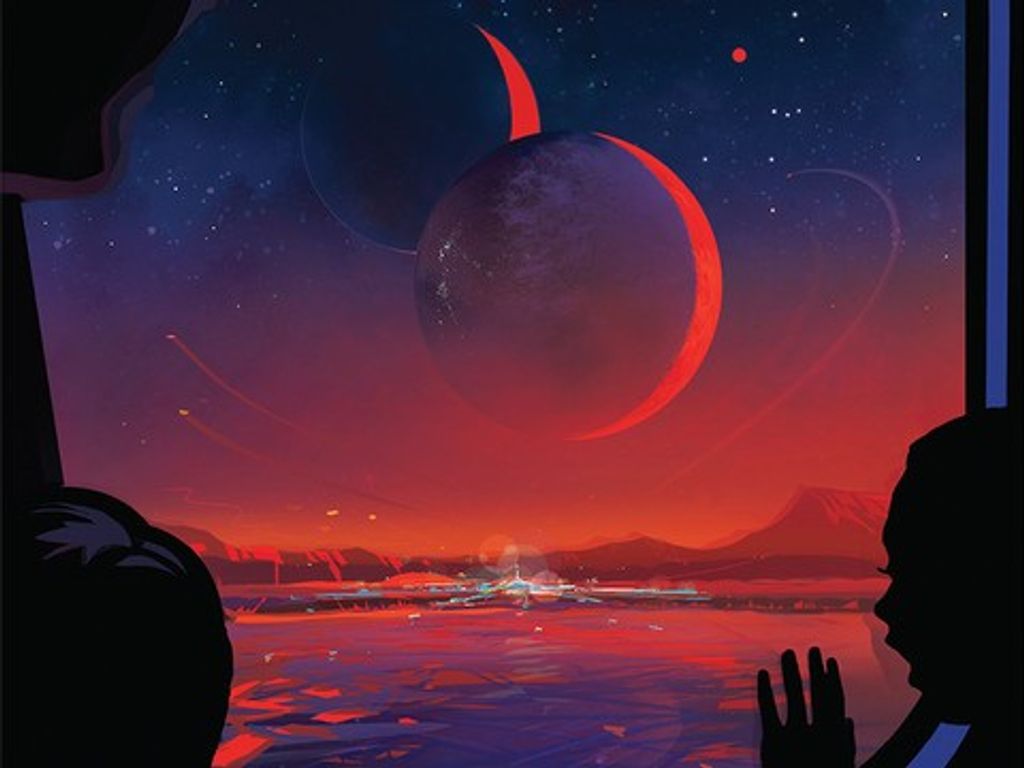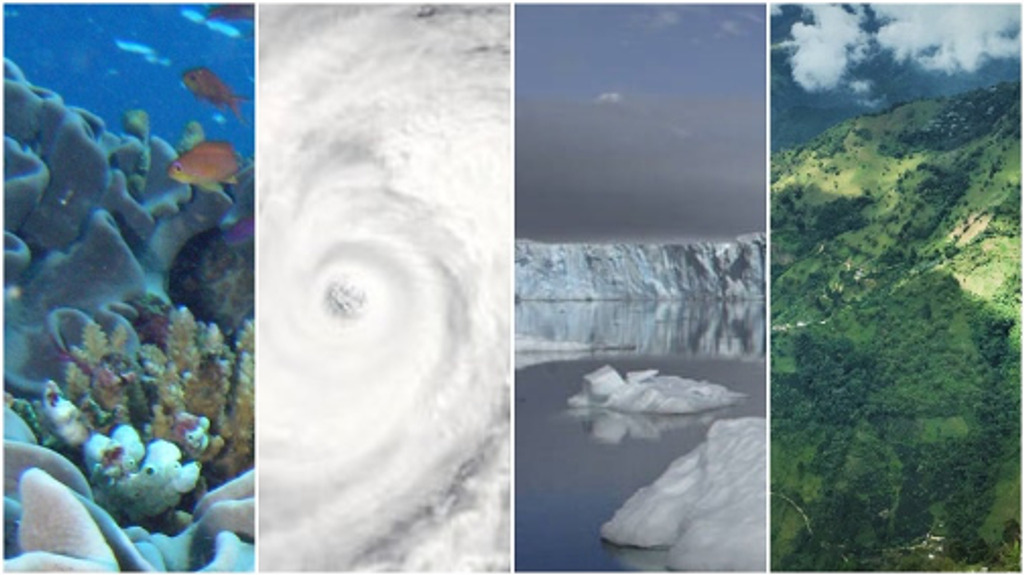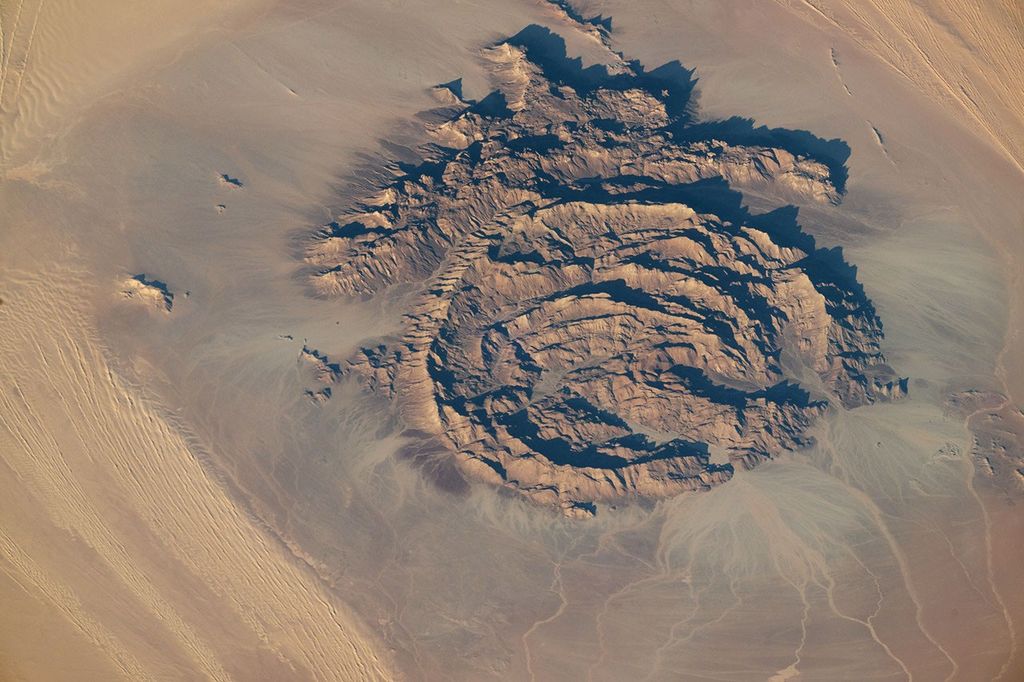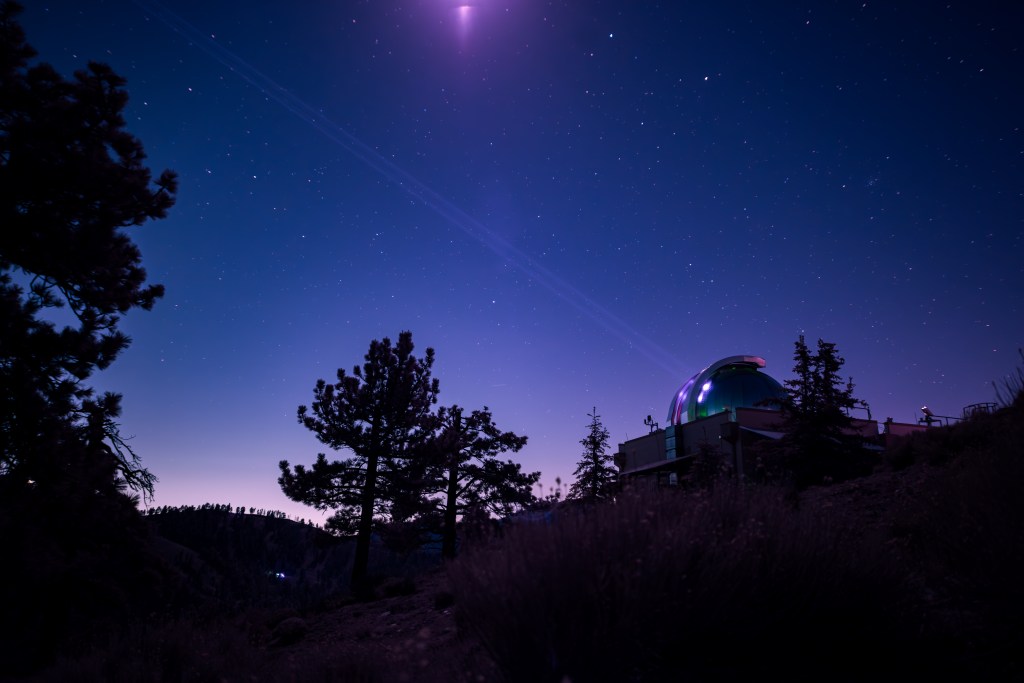1 min read
Artist’s Impression of Kepler 138 Planetary System

In this illustration super-Earth Kepler-138 d is in the foreground. To the left, the planet Kepler-138 c, and in the background the planet Kepler 138 b, seen in silhouette transiting its central star. Kepler 138 is a red dwarf star located 218 light-years away. The low density of Kepler-138 c and Kepler-138 d — which are nearly identical in size — means that they must be composed largely of water. They are both twice Earth's mass but have roughly half of Earth's density, and therefore cannot be solid rock. This is based on measurements of their mass versus physical diameter. They are considered a new class of "water planet," unlike any major planet found in our solar system. Kepler-138 b is one of the smallest exoplanets known, having the mass of the planet Mars and the density of rock.
- Release DateDecember 15, 2022
- Science ReleaseTwo Exoplanets May Be Mostly Water, NASA’s Hubble and Spitzer Find
- CreditNASA, ESA, Leah Hustak (STScI)
Related Images & Videos
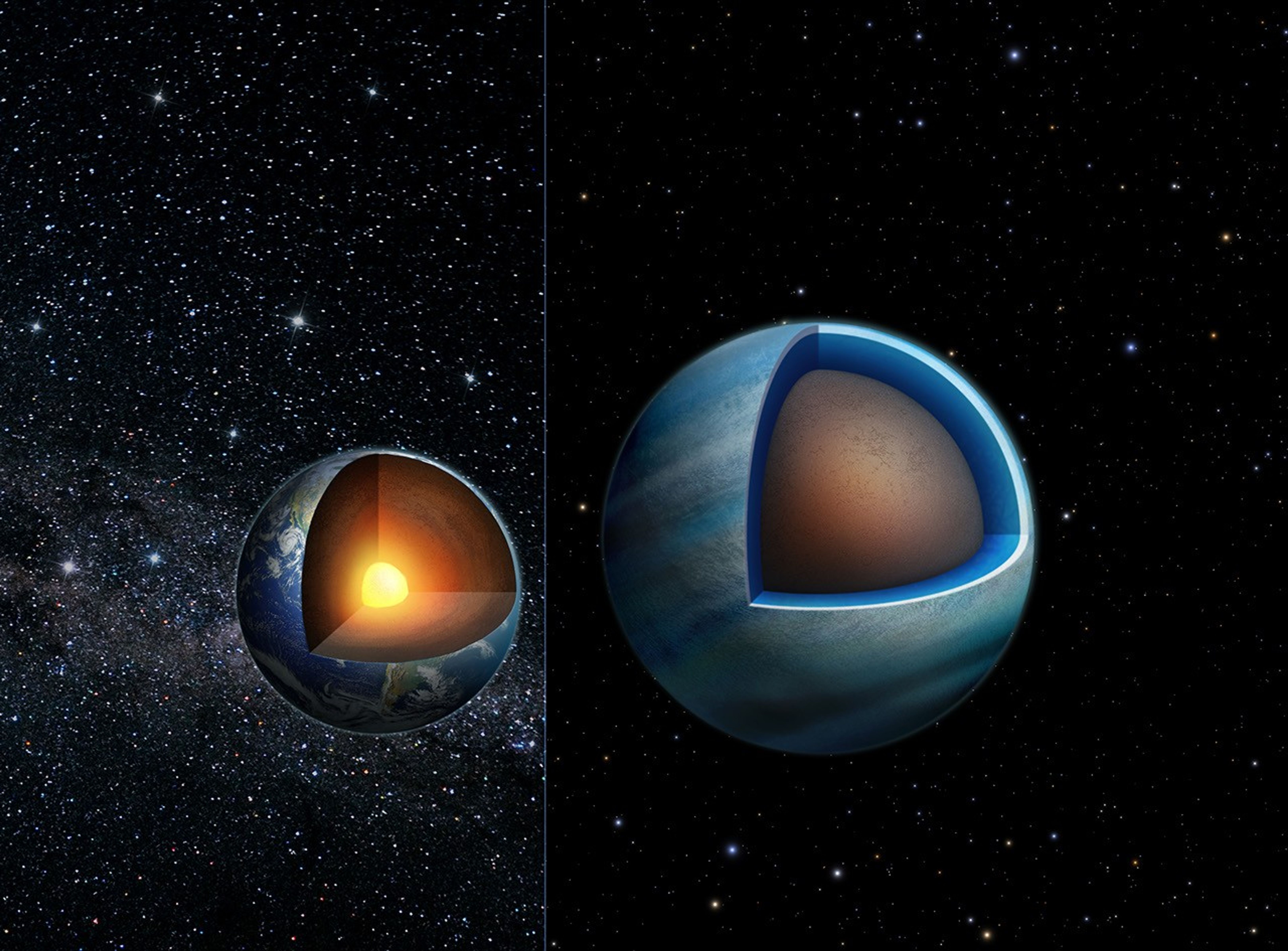
Illustrated Cross-section of the Earth and the Exoplanet Kepler-138 d
This is an artist's illustration showing a cross-section of the Earth (left) and the exoplanet Kepler-138 d (right). Like the Earth, this exoplanet has an interior composed of metals and rocks (brown portion), but Kepler-138 d also has a thick layer of high-pressure water in...
Share
Details
Claire Andreoli
NASA’s Goddard Space Flight Center
Greenbelt, Maryland
claire.andreoli@nasa.gov

